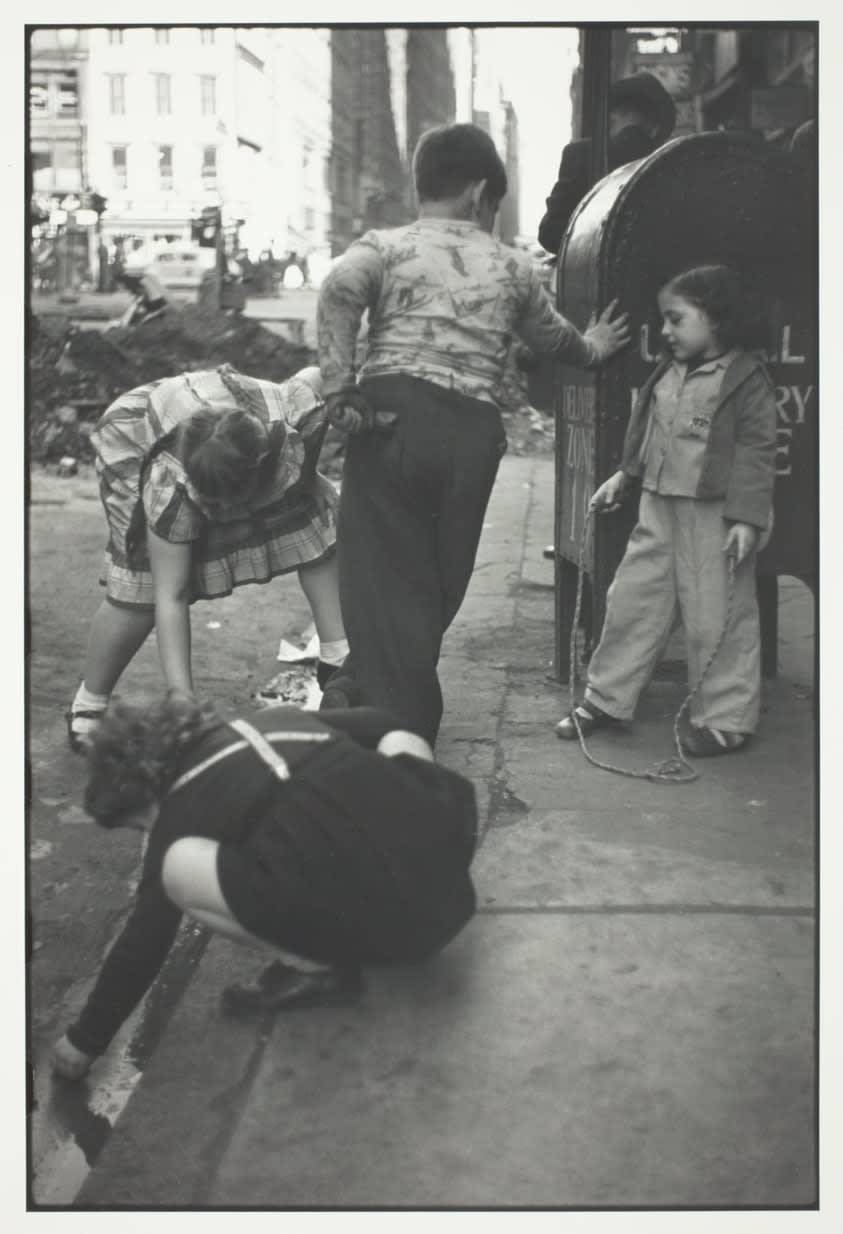
Louis Faurer American, 1916-2001
Printed by Chuck Kelton, 1980-81.
.
Paper: 35.5 x 27.7 cm / 14 x 11 in
.
In Louis Faurer's "Playground, New York City, 1947," three children crouch around a rain-filled gutter, transforming an ordinary street corner into a theatre of wonder.
Their bent forms echo one another like dancers frozen mid-choreography, while a fourth child waits nearby, jump rope coiled like energy itself.
Faurer's lens captures the delicate tension between innocence and urban authority. Behind the children looms a steel mailbox—rigid monument to adult routine—contrasting with the organic shapes of small hands skimming water's surface. The children's improvised play triumphs over the city's unforgiving geometry, finding poetry in puddles and cracked pavement.
Light pours from the distant street, illuminating faces and casting expressive shadows with film noir intensity. Yet rather than menace, the scene vibrates with tenderness. Faurer sidesteps grand postwar narratives to focus on childhood's quiet rituals: the thrill of finding a playing surface in rainwater, the camaraderie of shared discovery.
Every detail communicates his sensitivity to gesture and light. Rumpled dresses and sturdy pants speak of modest means but spirited resilience. The children's absorbed concentration reminds us that play is not mere leisure but vital imagination—a way to claim a city that seems too vast, too adult.
This curbside ballet belongs to Faurer's early period with the New York School, when he documented the city's unseen poetry in corners where life unfolded unguarded.
"Playground" endures as testament to his vision: mistrusting sentimentality but never denying humanity. In this simple scene, he invites us to see through children's eyes—where rainwater pooling between pavement cracks becomes canvas for dreams in a city still reeling from war.